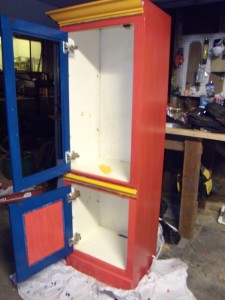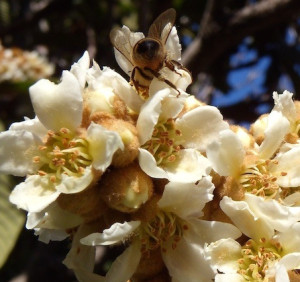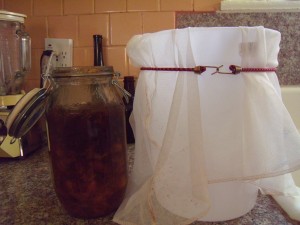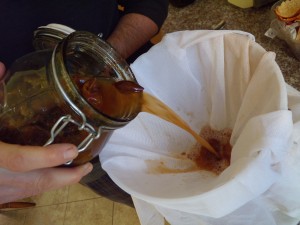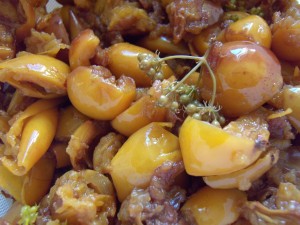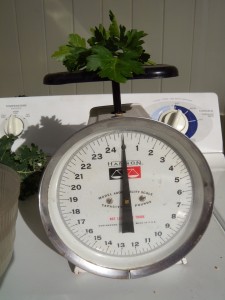In my ongoing love affair with gardening, I occasionally stop to ask myself why I care so much. Why does gardening bring me so much joy, and why do I feel so passionately that it matters?
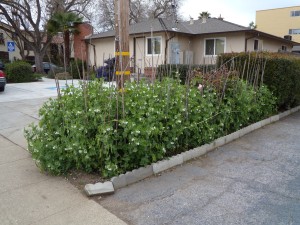
I know I’m far from alone in being overcome by the seductive power of growing food. Take one look around the Internet, and you turn up blog upon blog about edible gardening, urban farming, and local eating. I’m also sure that each gardener and backyard farmer has his or her own reasons for producing the ultimate in local fruits and veggies.
For some, I think, the motivation is a deliberate, rational desire to cut costs and raise one’s own standards of eating. For others, it is a moral calling—a drive to walk the walk of one’s green living ideals and follow a gentler path on our overburdened planet. Finally, there are those for whom the call of the asparagus bed is more akin to a spiritual journey; both literally and figuratively, gardening can ground us, connect us, make us feel alive and touched by the divine, bountiful world.
Today is Overall Gardener’s second birthday. 2014 is young and still full of possibility. Solstice is behind us, and the light is returning (if only the rains were, too). In the darkness before this year’s planting of seeds, I feel moved to not only reflect more on a topic I already enjoy immensely, but also to push toward a better understanding of why growing and gathering food for ourselves really matters. In doing so, I hope I can better advocate for these most important of human activities. No, really, I’m not just being dramatic; I think it matters that much.
Edible gardening and urban/suburban farming have become awfully fashionable in America. While hunting for a book on home distilling for Kelly before Christmas (egad—how very illegal!), I perused the gardening/home brewing/green living sections at a number of local bookstores. Without exception, they were chock full of books on growing your own food, making the most of small gardening spaces, transforming city lots into productive mini homesteads. These books are filled with sleek pictures of perfectly designed urban farmscapes. They make me all quivery and melty inside.
But while there is undeniably a craze for super-local urban farming and food gardening, it’s difficult to find anyone growing food in their front yard. In effect, as much as we pledge our love for edible gardening and our commitment to personal food production, this is still an activity to be kept discreetly out of sight. Are we afraid someone will steal our blueberries (Kelly is)? Are neighbors’ judgments, local ordinances, and HOA rules dissuading us from getting down and dirty with curbside artichokes? In many cases, unfortunately, yes.
But I think there is also a way in which many American city dwellers just haven’t made that cognitive and cultural leap. Gardening is great. Homegrown melons are fabulous. But lawns and birch triads and privet are comfortable and orderly and proper front yard fare.
Sadly, my front yard faces north. Add to that Kelly’s love of ornamentals, and you have the reason why our front yard is no edible jungle (and why we haven’t been able to agree on what to plant there and have left it barren and sheet mulched for two years now). But there is adequate curbside light for artichokes, a sunny spot I’ve wrangled as a future site for five blueberry bushes, and a 15-gallon ‘Wonderful’ pomegranate waiting patiently by the garage.
I think it’s important to grow food where passing strangers can see. I want my neighbors to know that I grow food proudly, and I want them to think about what they might grow on their own piece of earth—be it a sprawling backyard, or the narrow patch of dirt in front of an apartment. I think food is beautiful. I think gardeners everywhere need to get up their gumption, throw caution aside and do their lawns in. Imagine what your town would look like if this happened. Imagine all the food people could produce if they stopped limiting themselves to backyards. Imagine how much more interesting your neighborhood could be.
Several years ago, I resolved to photograph front yard food gardens. Where are these gardens, I wondered? I spent an afternoon driving through my town and those adjacent to it. It’s upsetting how little food you see in my area when you do this. Citrus is just about the only acceptable front yard crop, apparently. I have to add here that I live in California’s Silicon Valley—an area where wealth, status, and image are paramount for many.
Squinting from behind the wheel, I occasionally spotted a raised bed, or apple tree, or bean teepee, and I would slam on the brakes and start snapping pictures. These gardens didn’t, generally, look like the pictures in those snazzy urban farming books. They were imperfect—weedy, vegetables past their prime, hose left in a tangle. Some yards sported lawns edged with tomatoes and peppers. Some yards were bare dirt with one sprawling squash plant. But they were useful and beautiful in their own right.

Apartment gardening.
Just when I was beginning to despair at how few people let their gardens loose out front, I crossed over to the ‘poor’ side of town and found a different world. Front yard edibles still weren’t the norm, but they were more common. In a single block I found three cramped front yards overflowing with produce. Here there was corn and prickly pear cactus, squash peeping from behind a chain link fence, apartments with tiny gardens between stairwell and sidewalk.
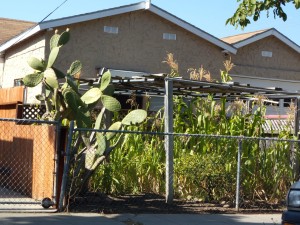
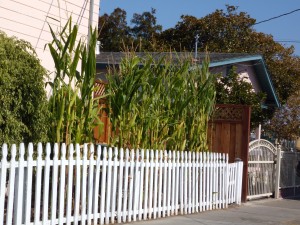
I won’t pretend to know all the reasons behind these gardeners’ efforts, though it would be tempting to venture that they garden from a combination of necessity and cultural values brought with them from outside the inhibited American gardening mentality.
Why do we garden? Why does it matter to us—especially when so many of us live hectic lives and have access to good fresh produce from grocery stores, farmers markets, CSAs? Urban farming is not just the property of upper-middleclass professionals browsing bookstore shelves and consulting specialty landscape architects. And, lest I sound too judgmental or self-righteous, urban food growing no more belongs solely to the urban poor. Food gathering and cultivation is each of our birthright, and it’s in our blood.
Growing food is nothing new, but our relationship to it is. In 1900, 38% of the American work force farmed. By 1990, only 2.6% of Americans made their living farming. It’s also true that agribusiness has radically altered farming, but the statistics are depressing nonetheless. In a few generations we have literally forgotten or abandoned essential knowledge that our grandparents and great grandparents held dear. Growing up, my grandmother was the fastest prune picker of her seven siblings. I’ve never eaten a prune, let alone grown and picked one. My grandfather was a nurse, not a nurseryman, but he still knew how to graft fruit trees.
At no point in human history have we lived lives so disconnected from our sources of nourishment. Surely this at least partly explains the visceral delight so many gardeners feel plunging their hands into rich damp loam, hauling a basket of onions in from the cold, spotting the first tiny growth that pushes up after planting seeds.
And maybe we haven’t really forgotten at all. Maybe this is why so many of us still come home from a day at the office, turn off the computer, and head outside to weed the beets.


